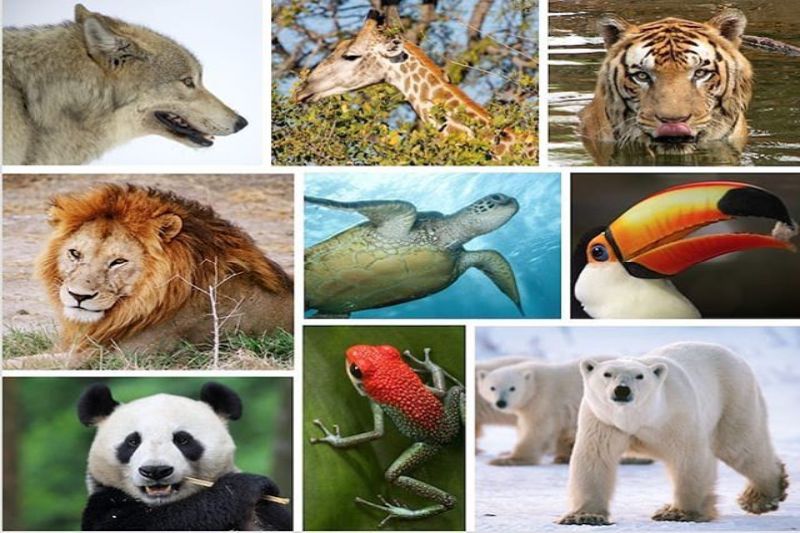Human-Induced Earth Changes Threaten Migratory Animal Extinction

Among the most adventurous animals on the planet, female leatherback turtles will travel up to 10,000 kilometers from their breeding grounds in search of nourishment in distant waters. From tropical Southeast Asia, they have been observed to venture up to the frigid waters of Alaska, home to a profusion of jellyfish.
However, going so far entails coming across potentially lethal dangers, such as poachers, fishing nets meant for other species, pollution, and waters warmed by the climate crisis, which forces the turtles to go farther in search of their meal.
According to a historic UN agency report released on Monday, hundreds of migratory species—those that undertake amazing annual migrations over land, rivers, and oceans—are in danger of going extinct as a result of human meddling. These turtles are only one of them.
Over 50% of the 1,189 species listed by the CMS are considered threatened. The CMS is a body of law that governs migration and wild animal conservation.
They comprise species from many different animal groups, such as raptors, birds, insects, wild cats, sharks, elephants, and whales.
According to the research, population reductions are occurring in about 44% of the identified species. The situation of migratory fish around the world is particularly concerning: 97% of those identified are in danger of going extinct.
This paper represents the first inventory of migratory species’ status and strategies for surviving in a drastically altered human-made world. The study determined that overexploitation and habitat loss due to human activities, such as clearing land for roads, infrastructure, and farming, posed the greatest concerns. These actions also break up the paths used by migratory animals, sometimes making it difficult for them to finish their travels.
The CMS estimates that human pressure on 58% of the monitored sites identified as significant for migratory species is unsustainable.
Two other significant dangers are pollution and climate change. In addition to making certain species migrate farther, warmer temperatures can cause animals to relocate at different times of the year. That can entail passing up prey or a breeding partner.
The narwhal is one extremely striking example. Before moving southward into deeper Arctic waters, these fantastical-looking sea animals—famous for their spiral-shaped tusks—spend the summers in primarily ice-free coastal regions.
But as the oceans warm and the yearly sea ice expansion occurs later and later, scientists have discovered that some narwhals are postponing their journey. If the ice flash freezes in the fall, they run the risk of becoming trapped in sea ice without any gaps for air to pass through.
Coral reefs and other aquatic habitats may be destroyed as a result of global warming.
Certain species are finding migration more hazardous as a result of light pollution, especially birds. The article stated that since 1978, more than 40,000 dead birds that had collided with the McCormick Place Lakeside Center, a Chicago structure on the shore of Lake Michigan, have been retrieved. The birds were drawn to the building by the light coming in its windows.
Large migrating seabirds called albatrosses have been shown to die as a result of plastic pollution, but certain mass whale strandings have been connected to sound pollution.
The paper clarifies the important role that these frequently magnificent animals play in maintaining the delicate ecological balance of the planet.
“These animals are, first and foremost, part of the ecosystems where they’re found,” CMS executive secretary Amy Fraenkel told CNN. “And we have a lot of evidence showing that if you remove these species, if they decline, it will have impacts on the ecosystems where they’re found, and not in a positive way.”
According to the findings, over 500 types of blooming plants rely on migratory bats for pollination.
Consider bats as an example. It can be difficult to consider them as beings that enhance the beauty of the planet. However, as pollinators of over 500 flowering plant species, those who move play a vital part in the production of a wide variety of fruits and flowers, according to the paper.
The bats control the proliferation of insects by eating large quantities of them, and they also scatter seeds, which support the upkeep of healthy forests.
However, hunting—whose meat is prized in some nations—and deforestation, which obliterates bats’ habitat, pose threats to the species. Foraging bats are also distracted by noise pollution, which reduces their hunting efficiency.
The report has some positive news. Positive trends have been observed in 14 species, including humpbacked and blue whales. However, the overall image is concerning.
“Today’s report clearly shows us that unsustainable human activities are jeopardizing the future of migratory species – creatures who not only act as indicators of environmental change but play an integral role in maintaining the function and resilience of our planet’s complex ecosystems,” Inger Andersen, executive director of the United Nations Environment Programme, said in a statement.
The report was introduced on Monday in Samarkand, Uzbekistan, during a significant UN meeting on wildlife conservation.
Because so many creatures that go on these regular treks traverse international borders on land, in the water, or in the air, experts argue that reducing the hazards to migratory species will require global cooperation.
“Migratory species have a special role in nature as they don’t recognize political boundaries,” said Anurag Agrawal, professor of environmental studies at Cornell University. “Instead, they sew together large areas of the planet through their movements. Their conservation thus requires international cooperation.”